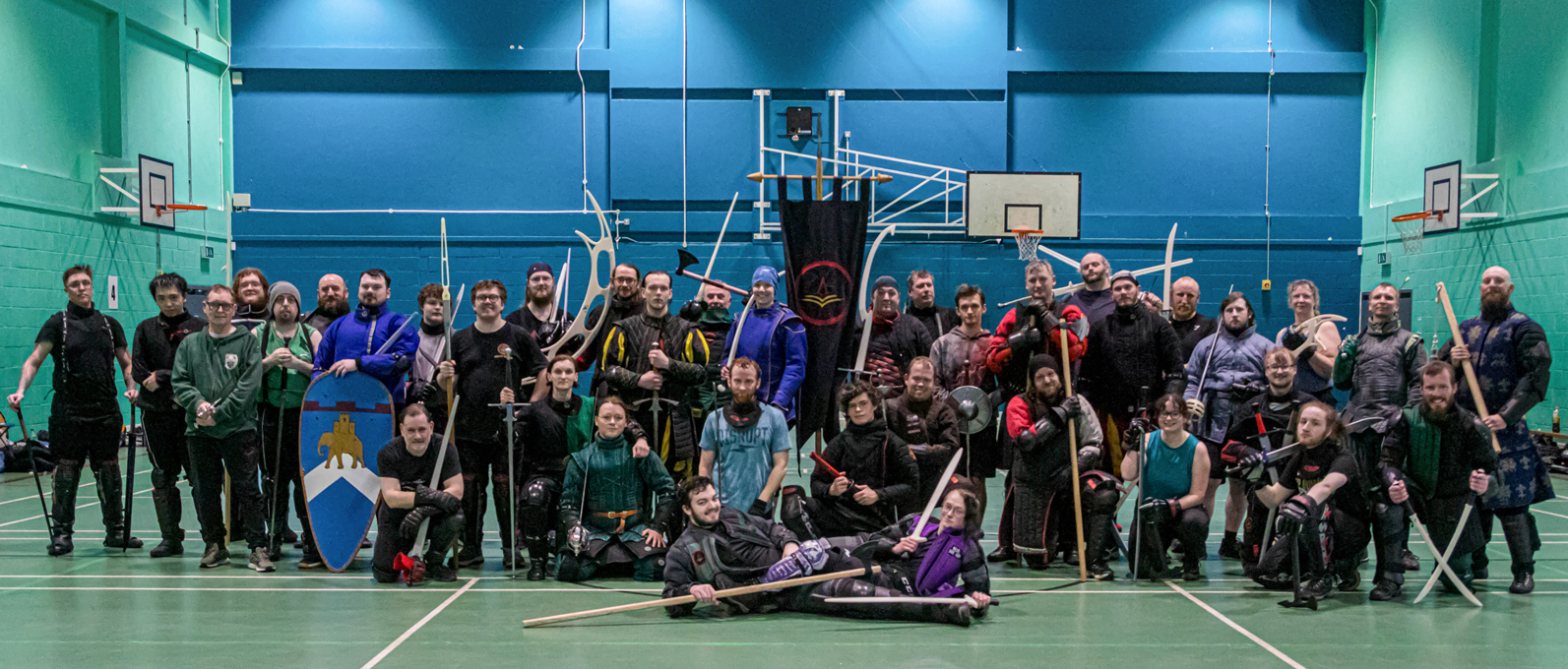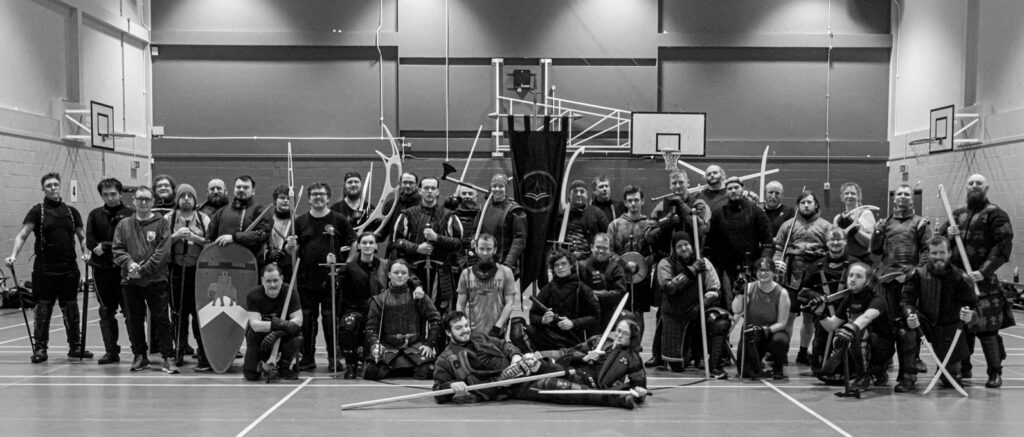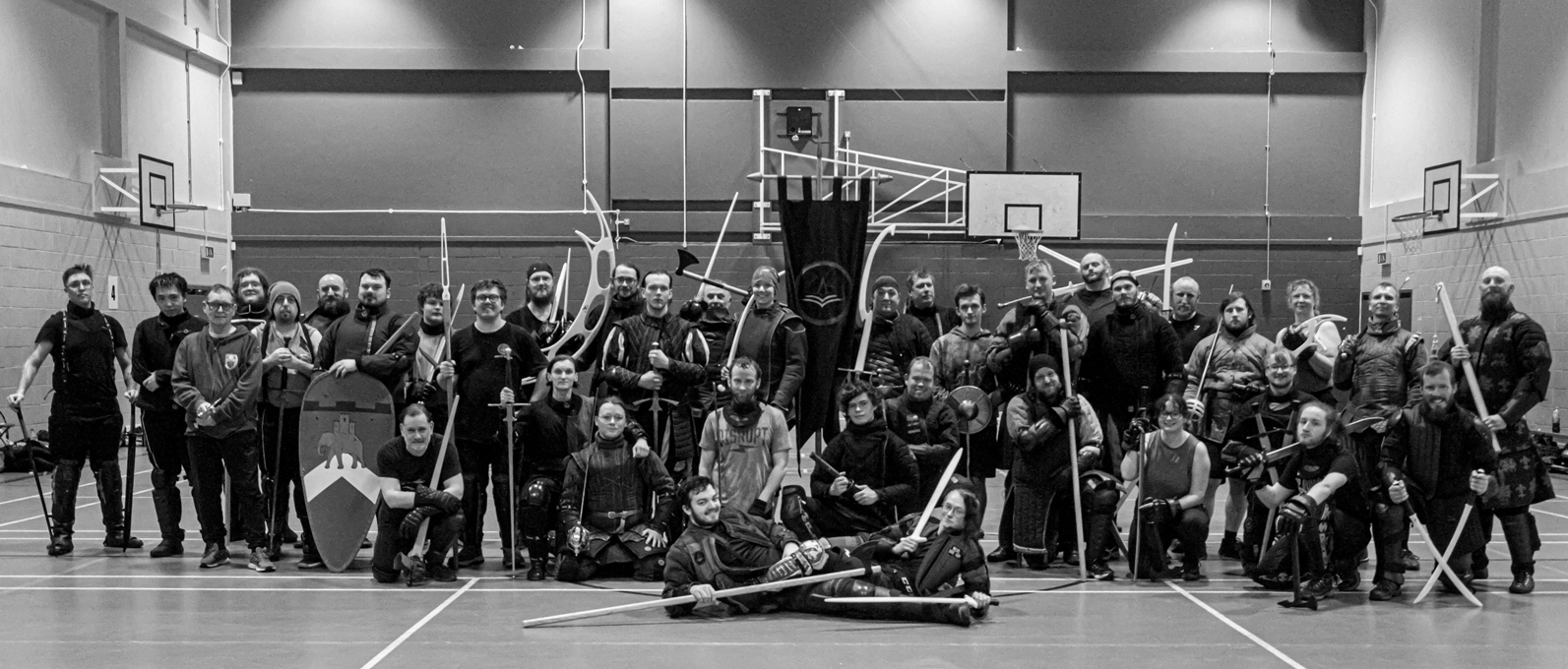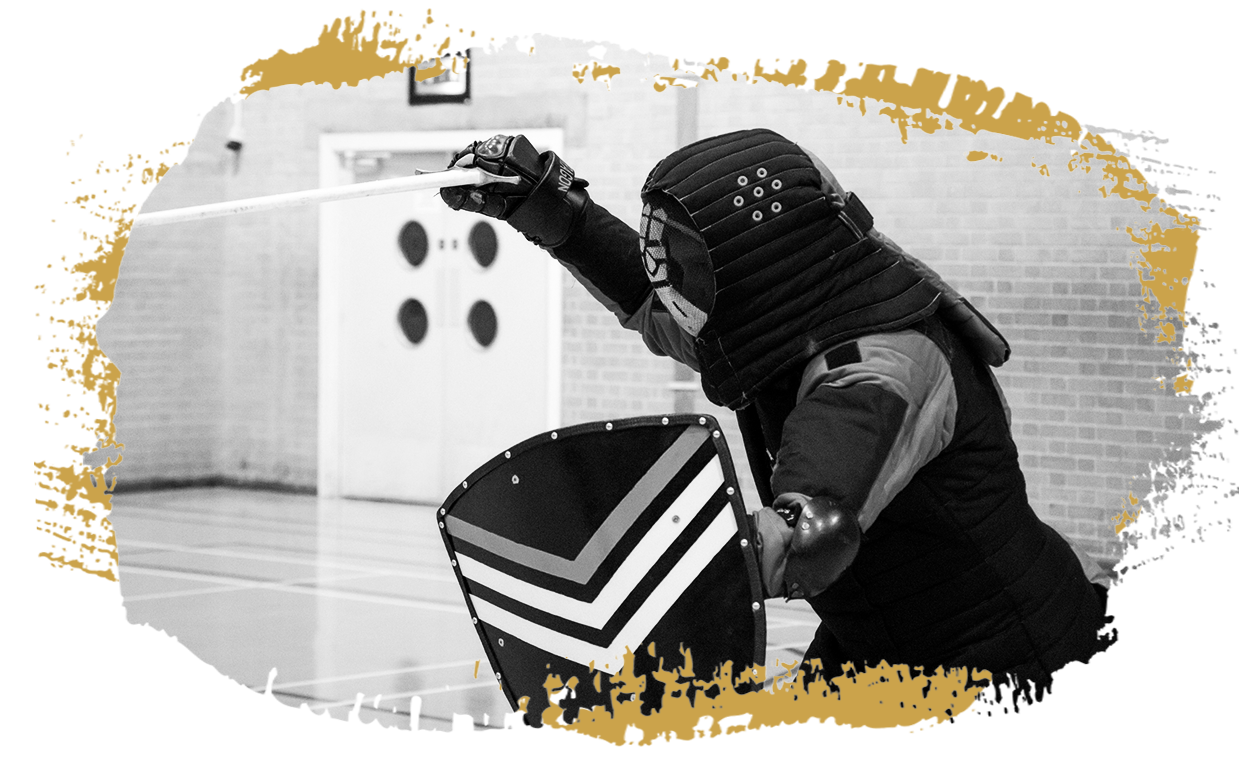“You have two hands. Use em” is something I’m often found saying in my instructing role, and this muster seminar was on precisely that. Specifically, how to use two weapons without becoming overwhelmed with ways to progress one’s dual weapon journey beyond one attack while the other defends.
The first drill in the seminar was to build familiarity with using both hands during a fight simultaneously. I set this up using what I have called my Deimos/Phobos, a fundamental principle of my dual weapon. It can be boiled down to the idea that while one weapon acts, the other is prepared for movement, whether defensive or offensive, depending on your opponent’s feedback. To drill this, the Attacker begins throwing an attack with Deimos. It doesn’t matter what, as long as it makes the Defender respond, the Defender then responds however they feel with a block or parry with their Deimos, as Deimos is whichever weapon moves first, Attacker then based on the Defender’s response either attacks with Phobos or defends with it. This will continue with each participant trying to match their opponent. It creates a very satisfying trade of blows back and forth, with participants being pushed to keep track of their weapons and the opponents while preventing themselves from becoming tangled.
This drill introduces two fundamental ideas to my dual-weapon approach: always being prepared for movement, offensive or defensive, not fully committing to any single action, and having between 10% and 20% free to bail out of a bad situation. This creates an interesting dynamic between both duelers, where they need their opponent to feed them input before a move can be made while also knowing that every move they both make and receive can always be diverted.
The second drill was much the same, this time focusing on range control and targeting priorities. With dual weapons, people will creep much closer than usual as their minds are occupied with everything their hands are doing; they stop paying attention to where their bodies are positioned, leading to people becoming too close for proper weapon movement. A simple way to fix this is to change your targeting priorities with your weapons; in HEMA, there is a desire to consistently score ‘deep’ targets, the head and chest, particularly in tournaments. With dual weapons, that tendency will lead to you being hit by someone with a longer range, so instead, look for hand and arms shots as a first priority, with deep targets being second.
In the third drill, we looked at different ways to deal with being outranged, with the key principle being the lack of commitment to any single attack or block practised during drill 2. In this, the starting idea is giving input to receive output from your opponent; with two weapons, we are generally outranged by any two-hander, from the simple longsword to the naginata. So, to defeat this range disadvantage, we combine the ideas from the previous drills with throwing an attack with every intention of bailing out of it; typically, your opponent will either defend against it or strike back at you as they are out of range of your attack. Here, you will bail from the Deimos attack and either use Phobos’ prepared action to defend or transition Deimos to defend, allowing Phobos to strike at a more viable target, i.e. the hands. You need to be ready to close distance during this attack cycle; otherwise, you will be snooker-cued to death by the longer-range weapon. When moving with dual weapons, an easy principle to follow is moving with either the shorter weapon or the outgoing weapon (normally Deimos).
As a wrap-up, this is meant to give you some guiding principles when beginning to use dual weapons, but the biggest guide will always be your own experience. Get to the session, out in the garden, or even meet up with friends at the weekend and just start trying. It will be awkward and confusing, but eventually, you’ll develop a level of flow and be able to start working with the laid-out principles.




